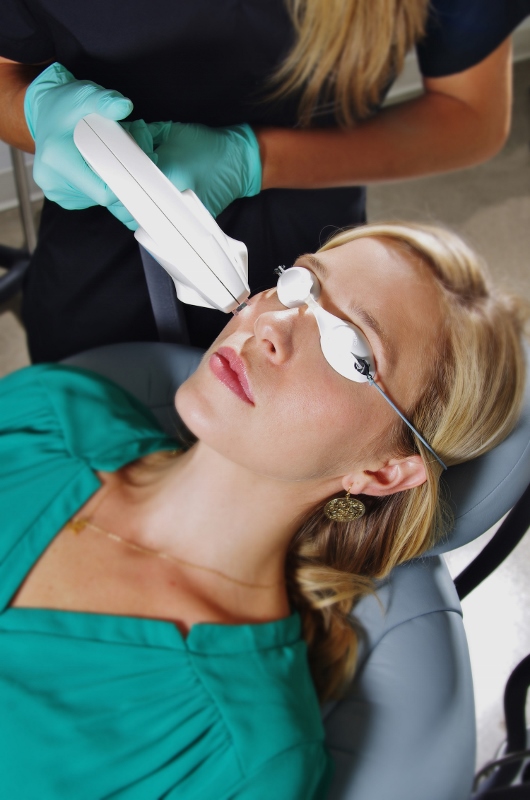
What exactly is a Photofacial?
Questions about photofacials, or fotofacials, are frequently asked by patients new to the world of lasers and light-based technology. “Photofacials are a great way to improve skin tone and even out discoloration on the skin,” says Dr. Miriam Hanson, board-certified dermatologist and cosmetic skin care expert in Austin, Texas.
During these treatments, the patient comfortably relaxes, while the provider runs a wand-type attachment over the areas of concern on the skin with a series of overlapping flashes or pulses of light. This treatment is often recommended to individuals seeking younger looking skin.
“The photofacial treatment is a virtually painless way of boosting the skin’s collagen production,” explains Dr. Hanson. “The treatment is also great for treating age spots and spider veins, facial redness, acne scars, as well as for diminishing the appearance of broken capillaries in the skin.” The positive difference it can quickly make in one’s appearance is remarkable.
The most effective photofacials are performed with a laser device, such as the elōs Plus, that emit short, intense, pulsed, polychromatic light directly to the problem areas. These IPL light rays penetrate just beneath the surface of the skin, damaging the melanin that appears as age spots, or attacking any broken capillaries. The skin then goes to work repairing the damage, leaving the client with a more even, youthful looking skin tone. The production of elastin and collagen is also boosted during treatment. This makes the skin firmer and gives it a fresher look.
Photofacials do not require any down time and, when performed by a specially-trained dermatologists and providers, pose few risks. It is important, however, that prior to treatment, the professional using the IPL device brief his or her patients about the advantages, disadvantages and any risks involved.
The results of an IPL photofacial vary from person to person. When administered by a licensed professional dermatologist, most people notice improvement in their skin after the initial treatment. However, results can be different, depending on how much sun damage exists and the patient’s skin type. Excellent results are usually attained after 3 – 4 treatments. “How often additional treatments are needed depends on how well the patient protects him or herself from the sun afterward,” says Dr. Hanson. Results will be maintained for longer periods of time when the patient practices sun avoidance and liberally applies a high quality broad-spectrum sunscreen each morning before going out into the sun, and a retinoid or retinol cream at bedtime.
Contact Us
Dr. Hanson treats patients at Sanova Dermatology. If you are interested in exploring photofacial options and would like more information, please contact us to schedule a consultation.
Join Us
